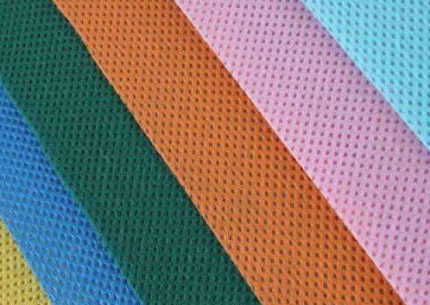What material are non-woven fabrics made of? How much does non-woven fabric cost per meter?
Non-woven fabrics are usually used to make shopping bags and disposable hygiene products. Of course, non-woven fabrics can also be seen in the field of shoes and clothing. It does not have warp and weft threads. It is made of polypropylene resin as raw material and then mechanically sorted into cloth. Therefore, it cannot extract threads like other fabrics. It is more convenient for sewing or cutting. The advantages of non-woven fabrics in all aspects As well as its wide range of uses, people’s demand for it is increasing. In order to let everyone better understand non-woven fabrics, this article will introduce to you non-woven fabrics, including the price of non-woven fabrics and some of its characteristics.

First of all, let’s take a look at the price of non-woven fabrics. For wholesale, the price of non-woven fabrics varies from a few yuan per yard to more than ten yuan per yard depending on the quality. For retail, the price ranges from a few yuan per yard to more than ten yuan per yard. It will be slightly more expensive, but the increase will not be too big, so the price of non-woven fabrics is generally very cheap.
Next let’s take a look at some characteristics of non-woven fabrics.
First of all, the specific gravity of polypropylene resin, the raw material of non-woven fabrics, is only 0.9, so the fabric is extremely light and has good looseness. The overall feel of the non-woven fabric is also greatly improved. , Secondly, non-woven fabrics use fine fibers, which also makes the softness of the fabric relatively moderate.
Non-woven fabrics are non-toxic and non-irritating. Such products will not irritate the human body during use. At the same time, the physical and chemical properties of non-woven fabrics are also particularly stable and antibacterial. The corrosion resistance is also particularly excellent.
Lastly, non-woven fabrics are more environmentally friendly. The molecular structure of polypropylene is not as strong as polyethylene. It is relatively easy to degrade in the natural environment, usually within 3 months. Completely degraded, the damage to the environment is actually very small.
However, non-woven fabrics also have some flaws, that is, their durability and strength are not as good as other fabrics, and they cannot be washed like other fabrics.
The above is some knowledge about non-woven fabrics. If you want to know more about non-woven fabrics, you can read the article on the classification of non-woven fabrics and their advantages and disadvantages in Hall 3.
BBBSDFWFWFWE
Disclaimer:
Disclaimer: Some of the texts, pictures, audios, and videos of some articles published on this site are from the Internet and do not represent the views of this site. The copyrights belong to the original authors. If you find that the information reproduced on this website infringes upon your rights, please contact us and we will change or delete it as soon as possible.
AA






